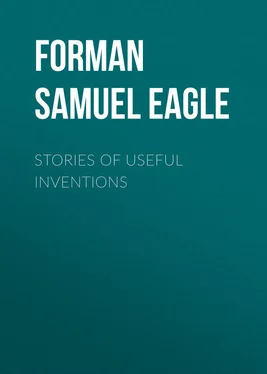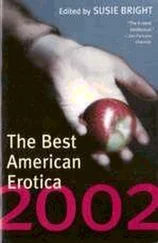Samuel Forman - Stories of Useful Inventions
Здесь есть возможность читать онлайн «Samuel Forman - Stories of Useful Inventions» — ознакомительный отрывок электронной книги совершенно бесплатно, а после прочтения отрывка купить полную версию. В некоторых случаях можно слушать аудио, скачать через торрент в формате fb2 и присутствует краткое содержание. Жанр: foreign_antique, foreign_prose, на английском языке. Описание произведения, (предисловие) а так же отзывы посетителей доступны на портале библиотеки ЛибКат.
- Название:Stories of Useful Inventions
- Автор:
- Жанр:
- Год:неизвестен
- ISBN:нет данных
- Рейтинг книги:5 / 5. Голосов: 1
-
Избранное:Добавить в избранное
- Отзывы:
-
Ваша оценка:
- 100
- 1
- 2
- 3
- 4
- 5
Stories of Useful Inventions: краткое содержание, описание и аннотация
Предлагаем к чтению аннотацию, описание, краткое содержание или предисловие (зависит от того, что написал сам автор книги «Stories of Useful Inventions»). Если вы не нашли необходимую информацию о книге — напишите в комментариях, мы постараемся отыскать её.
Stories of Useful Inventions — читать онлайн ознакомительный отрывок
Ниже представлен текст книги, разбитый по страницам. Система сохранения места последней прочитанной страницы, позволяет с удобством читать онлайн бесплатно книгу «Stories of Useful Inventions», без необходимости каждый раз заново искать на чём Вы остановились. Поставьте закладку, и сможете в любой момент перейти на страницу, на которой закончили чтение.
Интервал:
Закладка:

FIG. 4. – A SHELL FILLED WITH OIL AND USED AS A LAMP.
I have given the development of the candle first because its forerunner, the torch, was first used for lighting. But it must not be forgotten that along with the torch there was used, almost from the beginning, another kind of lamp. Almost as soon as men discovered that the melted fat of animals would burn easily – and that was certainly very long ago – they invented in a rude form the lamp from which the lamp of to-day has been evolved. The cavity of a shell (Fig. 4) or of a stone, or of the skull of an animal, was filled with melted fat or oil, and a wick of flax or other fibrous material was laid upon the edge of the vessel. The oil or grease passed up the wick by capillary action, 6 6 Hold the end of a dry towel in a basin of water and watch the water rise in the towel. It rises by capillary action.
and when the end of the wick was lighted it continued to burn as long as there were both oil and wick. This was the earliest lamp. As man became more civilized, instead of a hollow stone or a skull, an earthen saucer or bowl was used. Around the edge of the bowl a gutter or spout was made for holding the wick. In the lamp of the ancient Greeks and Romans the reservoir which held the oil was closed, although in the center there was a hole through which the oil might be poured. Sometimes one of these lamps would have several spouts or nozzles. The more wicks a lamp had, of course, the more light it would give. There is in the museum at Cortona, in Italy, an ancient lamp which has sixteen nozzles. This interesting relic (Fig. 5) was used in a pagan temple in Etruria more than twenty-five hundred years ago.
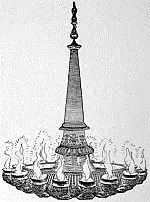
FIG. 5. – AN ETRUSCAN LAMP 2500 YEARS OLD.

FIG. 6. – AN ANCIENT LAMP.
Lamps such as have just been described were used among the civilized peoples of the ancient world, and continued to be used through the Middle Ages far into modern times. They were sometimes very costly and beautiful (Fig. 6), but they never gave a good light. They sent out an unpleasant odor, and they were so smoky that they covered the walls and furniture with soot. The candle was in every way better than the ancient lamp, and after the invention of wax tapers – candles made of wax – in the thirteenth century, lamps were no longer used by those who could afford to buy tapers. For ordinary purposes and ordinary people, however, the lamp continued to do service, but it was not improved. The eighteenth century had nearly passed, and the lamp was still the unsatisfactory, disagreeable thing it had always been.
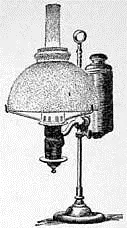
FIG. 7. – AN ARGAND LAMP.
Late in the eighteenth century the improvement came. In 1783 a man named Argand, a Swiss physician residing in London, invented a lamp that was far better than any that had ever been made before. What did Argand do for the lamp? Examine an ordinary lamp in which coal-oil is burned. The chimney protects the flame from sudden gusts of wind and also creates a draft of air, 7 7 Light a short piece of candle and place it in a tumbler, and cover the top of the tumbler. The experiment teaches that a flame must have a constant supply of fresh air and will go out if the air is shut off.
just as the fire-chimney creates a draft. Argand's lamp (Fig. 7) was the first to have a chimney. Look below the chimney and you will see open passages through which air may pass upward and find its way to the wick. Notice further that as this draft of air passes upward it is so directed that, when the lamp is burning, an extra quantity of air plays directly upon the wick. Before Argand, the wick received no supply of air. Now notice – and this is very important – that the wick of our modern lamp is flat or circular, but thin . The air in abundance plays upon both sides of the thin wick, and burns it without making smoke. Smoke is simply half-burned particles (soot) of a burning substance. The particles pass off half-burned because enough air has not been supplied. Now Argand, by making the wick thin and by causing plenty of air to rush into the flame, caused all the wick to be burned and thereby caused it to burn with a white flame.
After the invention of Argand, the art of lamp-making improved by leaps and by bounds. More progress was made in twenty years after 1783 than had been made in twenty centuries before. New burners were invented, new and better oils were used, and better wicks made. But all the new kinds of lamps were patterned after the Argand. The lamp you use at home may not be a real Argand, but it is doubtless made according to the principles of the lamp invented by the Swiss physician in 1783.
Soon after Argand invented his lamp, William Murdock, a Scottish inventor, showed the world a new way of lighting a house. It had long been known that fat or coal, when heated, gives off a vapor or gas which burns with a bright light. Indeed, it is always a gas that burns, and not a hard substance. In the candle or in the lamp the flame heats the oil which comes up to it through the wick and thus causes the oil to give off a gas. It is this gas that burns and gives the light. Now Murdock, in 1797, put this principle to a good use. He heated coal in a large vessel, and allowed the gas which was driven off to pass through mains and tubes to different parts of his house. Wherever he wanted a light he let the gas escape at the end of the tube (Fig. 8) in a small jet and lighted it. Here was a lamp without a wick. Murdock soon extended his gas-pipes to his factories, and lighted them with gas. As soon as it was learned how to make gas cheaply, and conduct it safely from house to house, whole cities were rescued from darkness by the new illuminant. A considerable part of London was lighted by gas in 1815. Baltimore was the first city in the United States to be lighted by gas. This was in 1821.
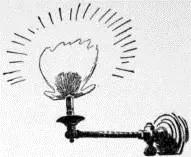
FIG. 8. – THE GAS JET.
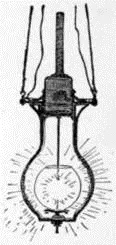
FIG. 9. – AN EARLY ARC LAMP.
The gas-light proved to be so much better than even the best of lamps, that in towns and cities almost everybody who could afford to do so laid aside the old wick-lamp and burned gas. About 1876, however, a new kind of light began to appear. This was the electric light. The powerful arc light (Fig. 9), made by the passage of a current of electricity between two carbon points, was the first to be invented. This gave as much light as a hundred gas-jets or several hundred lamps. Such a light was excellent for lighting streets, but its painful glare and its sputtering rendered it unfit for use within doors. It was not long, however, before an electric light was invented which could be used anywhere. This was the famous Edison's incandescent or glow lamp (Fig. 10), which we see on every hand. Edison's invention is only a few years old, yet there are already more than thirty million incandescent lamps in use in the United States alone.
Читать дальшеИнтервал:
Закладка:
Похожие книги на «Stories of Useful Inventions»
Представляем Вашему вниманию похожие книги на «Stories of Useful Inventions» списком для выбора. Мы отобрали схожую по названию и смыслу литературу в надежде предоставить читателям больше вариантов отыскать новые, интересные, ещё непрочитанные произведения.
Обсуждение, отзывы о книге «Stories of Useful Inventions» и просто собственные мнения читателей. Оставьте ваши комментарии, напишите, что Вы думаете о произведении, его смысле или главных героях. Укажите что конкретно понравилось, а что нет, и почему Вы так считаете.
